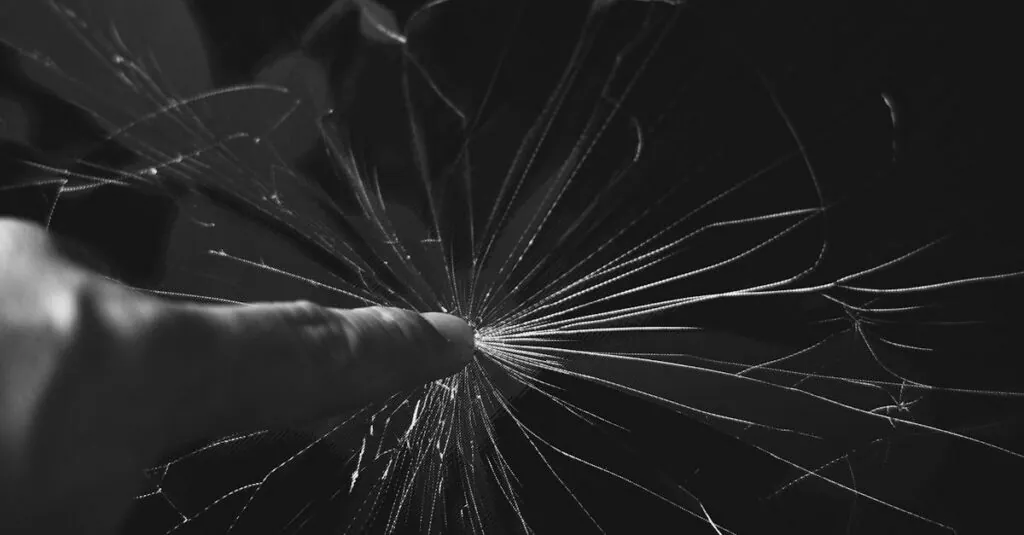Losing a tooth can feel like a scene straight out of a horror movie. Suddenly, there’s a gap where a pearly white used to shine, and your smile looks more like a haunted house than a dental wonderland. But fear not! Making a dental flipper at home can be a fun and rewarding DIY project that’ll have you grinning in no time.
Imagine crafting your very own tooth replacement while channeling your inner mad scientist. With a few simple materials and a dash of creativity, you can whip up a flipper that not only restores your smile but also saves you a trip to the dentist. So roll up those sleeves and get ready to tackle this toothy adventure—because who says dental care can’t be a little quirky?
Table of Contents
ToggleUnderstanding Dental Flippers
Dental flippers provide a temporary solution for gaps caused by missing teeth. This custom-made device connects an artificial tooth to a plastic base, resembling natural teeth in appearance.
What Is a Dental Flipper?
A dental flipper acts as a removable partial denture. It generally consists of an acrylic plate with one or more false teeth attached, designed to fit snugly over the gums. Various shapes and sizes cater to individual needs, ensuring a comfortable fit. Dental flippers function as an aesthetic remedy while patients wait for a more permanent solution, such as implants or bridges.
Benefits of Using a Dental Flipper
Using a dental flipper offers several advantages. First, it restores the smile and boosts confidence by filling visible gaps. Second, flippers are lightweight and easy to clean, making maintenance straightforward. Third, they provide a cost-effective alternative to more complex dental procedures. Fourth, their temporary nature allows flexibility during ongoing treatments. Lastly, flippers can help maintain proper bite alignment, promoting overall oral health.
Materials Required
Creating a dental flipper at home involves gathering specific materials. This section outlines essential supplies and optional tools for the project.
Essential Supplies
A dental flipper requires certain key components. First, acrylic resin provides the base for the flipper. Next, a tooth-shaped mold, often made from silicone, helps shape the artificial tooth. Dental adhesive secures the tooth to the resin base. Additionally, a pair of gloves ensures hygiene throughout the process. Finally, a measuring cup aids in mixing the resin accurately. Acquiring these items enables a successful DIY experience.
Optional Tools
While the essential supplies facilitate the main tasks, having optional tools enhances the process. An electric mixer efficiently blends the acrylic resin. Pliers assist in manipulating components precisely. A small brush allows for applying adhesive evenly. Moreover, sandpaper helps smooth any rough edges. Lastly, a heat source can soften the acrylic if adjustments are needed. Using these tools can improve the quality and fit of the dental flipper.
Step-by-Step Guide to Making a Dental Flipper at Home
Creating a dental flipper at home involves several straightforward steps. Following these guidelines ensures a successful project with a satisfying outcome.
Preparing Your Mouth
Begin by cleaning your mouth thoroughly. Rinse with an antibacterial mouthwash to minimize bacteria. Remove any debris or plaque that could interfere with the mold. It’s essential for comfort that gums are healthy before starting the process. Waiting a day or two after tooth loss can aid in healing. Assess the gap to ensure accurate measurements for the mold.
Creating the Mold
Gather the necessary materials like impression material or dental putty. Mix the material as per the product instructions; it’s crucial to achieve the right consistency. Fill a tray with the mixture to form a base. Press the tray against the area where the tooth is missing, making sure it captures the surrounding gums well. Keep the tray in place for the recommended time to ensure a precise impression. After the designated time, gently remove the mold and inspect it for clarity and detail.
Shaping the Flipper
Get your acrylic resin and mix it according to the package directions. Pour the resin into the mold created earlier, ensuring it fills all the spaces. Allow sufficient time for the resin to cure, which usually takes several hours. Once cured, remove the flipper from the mold carefully. Trim any excess material with scissors or a file to create a comfortable fit. Test the flipper in your mouth, making continual adjustments if necessary for a snug and comfortable placement.
Tips for Maintaining Your Dental Flipper
Maintaining a dental flipper ensures its longevity and effectiveness. Proper care enhances oral health and keeps the flipper comfortable during use.
Cleaning Procedures
Cleaning a dental flipper requires regular attention. Use lukewarm water and mild soap to wash the flipper daily, avoiding abrasive materials. A soft toothbrush can effectively remove plaque. Rinsing the flipper after meals prevents residue buildup. Soaking the flipper in a recommended cleaning solution helps eliminate bacteria and odors. Doing this at least once a week keeps the flipper fresh. Following these steps ensures optimal hygiene and comfort.
Storage Guidelines
Storing a dental flipper correctly extends its lifespan. Keep the flipper in a dedicated, ventilated case to prevent damage. Avoid direct sunlight or extreme temperatures, as they may distort the flipper’s shape. Placing the flipper in water during storage prevents drying out. Always ensure it is clean before putting it away. These simple practices help maintain the integrity of the dental flipper while not in use.
Creating a dental flipper at home can be an empowering and practical solution for those facing the challenge of a missing tooth. By following the outlined steps and utilizing the right materials, anyone can achieve a comfortable and effective flipper. This DIY project not only restores smiles but also enhances confidence without the hefty price tag of professional dental work.
With proper care and maintenance, a homemade dental flipper can serve as a reliable temporary solution while keeping oral health in check. Embracing this creative endeavor allows individuals to take control of their dental needs, making the journey toward a complete smile a little more accessible.




